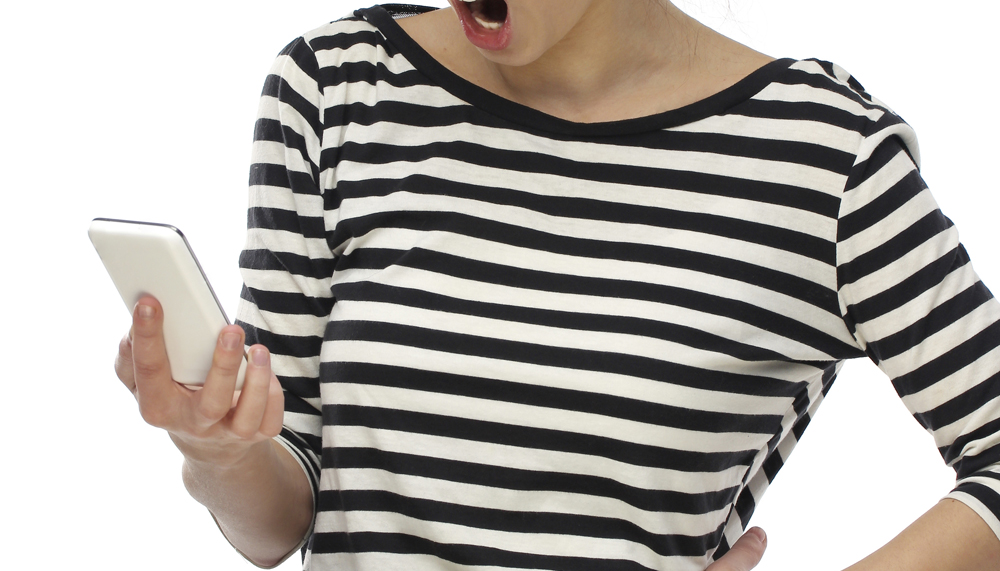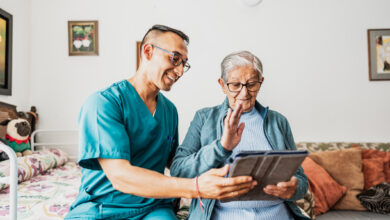Sharing isn’t always caring

Real-world examples can help workers understand when social media posts aren’t such a great idea.
Nurses are using social media in ever-growing numbers. So they need to be aware of behaviour and conduct that could breach their legal, professional and ethical responsibilities – even through ignorance.
This is the first of a two-part series examining the issues surrounding nurses’ use of social media. The first article will look at real instances where nurses’ postings and comments have led to disciplinary consequences. The purpose is to acquaint nurses with actual examples of what constitutes offending material, even in cases where, through ignorance, they may think the postings and comments are inane, innocent and of no consequence.
Recently in the UK, media have reported on a number of incidents concerning inappropriate postings by nurses. One memorable newspaper article was under the headline, “Nurses sacked after posting pictures of themselves online wearing incontinence pads …”. Sub-headlines included:
The nurse joked publicly online about being too hung-over to work. One woman said she nearly vomited while doing CPR on a patient. Another recommended taking hospital painkillersto deal with it. Another post read: ‘Nurses, here to save your ass, not kiss it’.
The newspaper went further. “[I]n expletive-ridden rants, the nurses and [another] healthcare worker … joked on Twitter about patients’ anatomies and toilet habits, and one nurse uploaded an image of herself wearing hospital incontinence pads over her uniform when she was supposed to be working.”
Three nurses joked on Twitter about being too hung-over to work after they had been drinking heavily the night before and confirmed this by posting images of the big night out. One nurse tweeted she was ‘trying not to vomit’ at work and a nurse colleague tweeted describing how she nearly vomited whilst performing CPR on a patient. In another tweet exchange, one nurse recommended taking a cocktail of painkillers to overcome the hangover and a tweet in reply boasted about having access to the hospital’s drug supply. There was also a series of insensitive jokes about patients, which would have been visible to the nurse’s 7000 followers.
Yet another nurse, in uniform, posted an image of her lap, where there was a strategically placed, peeled banana and two small mandarins, in an obvious phallic design.
Last but not least, one nurse, after receiving an explicit image from a stranger on the Snapchat app, where users share pictures that delete themselves within seconds, posted her own explicit tweet in response.
In 2010, another UK newspaper report, under the headline, “Captured on Facebook, the food-fighting nurses at hospital where 1,200 died”, with accompanying images.
That article stated that nurses posted images of a food fight involving a colleague who was leaving to take up a position elsewhere. The pictures display the nurse being soaked in a yoghurt energy drink, meant for patients, by other nurses. Two people posted photographs that depict shots of various nurses smiling and standing near the dishevelled nurses who took part.
The food fight took place in a side room off an acute medical unit, one of the wards that previously had been heavily criticised in a Healthcare Commission report revealing that up to 1200 patients needlessly lost their lives as a result of poor nursing care, neglect and staff shortages.
Last year, a newspaper report concerning NSW nurses carried the headline, “Naughty nurses told to behave after posting saucy selfies on social media.” The report and accompanying pictures depicted nurses wearing identifiable Health Service uniforms in ‘saucy selfies’ with cheeky captions such as “naughty nurse” and “tongue”. Another image was of a nurse who was male, dressed in scrubs and wearing a surgical mask, with the caption, “I pull all the b*****s.” Yet another posted a photograph of a male patient who appeared to be under anaesthetic; the picture was tagged “sex change”, “highasakite” and “postop”. On examination, the photo suggests he was recovering from shoulder surgery.
Finally, a picture was posted of a nurse in uniform kissing a clinical dummy that had been positioned upright in a chair with the caption, “[A]ll I need in this life of sin is me and my boyfriend.”
These are actual illustrations of the ‘real world’ types of social media use that can be deemed inappropriate.
Nurses should not delude themselves that a post is private or temporary and hence won’t be detected. For example, once a post is on Facebook, regardless of the privacy settings a nurse is at the mercy of others and loses control over further dissemination.
As can be seen in the examples given, tweeting works the same way, through the re-tweets. And apps such as Snapchat, where users share pictures that delete themselves within seconds, should not falsely seduce nurses into thinking they will not be detected either.
The newspaper headlines illustrate the media’s inflammatory fascination with reporting these ‘naughty’ types of incidents related to nursing. Accordingly, transgressions by nurses do end up in mass circulation media, both in hard copy and online (including personal images). And online electronic reporting lasts longer than the daily hard copy.
Another illuminative facet of these reports is that images and behaviour related to out-of-hours conduct can become inextricably mixed with a nurse’s duty to an employer.
In the example described earlier, of the nurses who tweeted after a big night out, the fact that the nurses had a hangover from a social, non-working occasion became entwined in the inappropriateness of the communication when they referred to it, thereby associating it with their workplace.
It’s not the fact of being hung-over, per se, that is inappropriate; it’s the nurse’s reference to its consequences or potential linkage to (poor) work performance and associated inappropriate suggestions – in other words, to drugs.
The food fight example, meanwhile, demonstrates how linking inappropriate events to greater issues magnifies perceptions of the level of inappropriateness. The food fight in isolation was inappropriate but not a grievous offence. Yet the social media posts linked it to a known issue concerning a reportedly awful standard of care that had contributed to the death of 1200 patients. A seemingly inconsequential activity, unrelated in fact, was linked to a more serious issue. So the consequences of the behaviour invariably became amplified.
The second article in this two-part series, which will appear in the March edition of Nursing Review, will look at how the courts are interpreting whether posts are inappropriate and worthy of causing dismissal from employment. It will also examine how inappropriate posts can breach obligations for ethics and privacy.
Scott Trueman is a lecturer in the school of nursing, midwifery and nutrition at James Cook University.
Email: [email protected]






One Comment